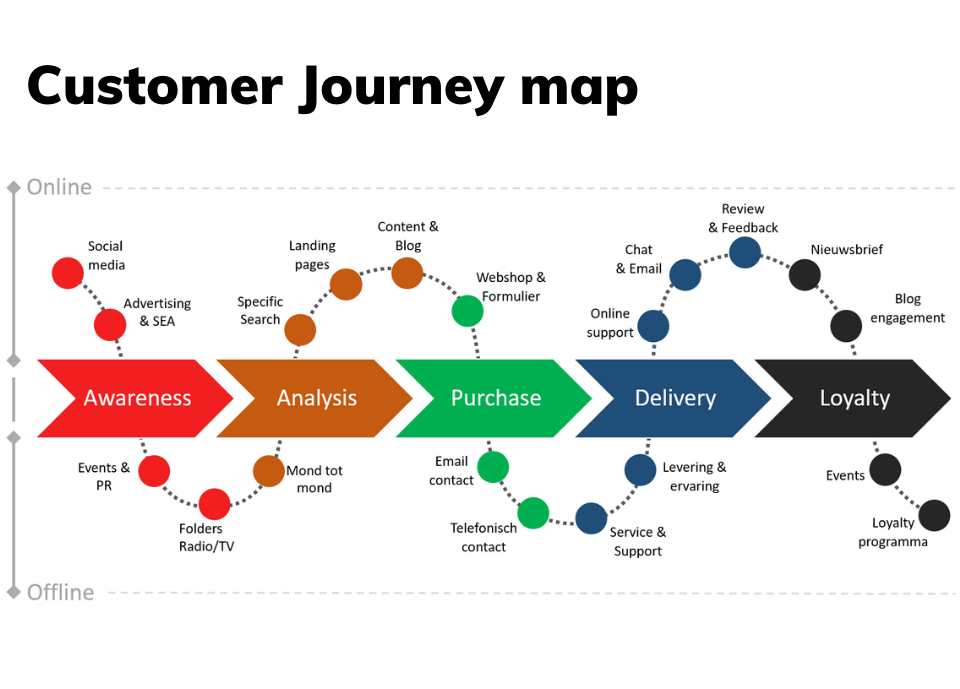
A customer journey map is a visual representation of the steps that a customer goes through when interacting with a company, from initial awareness of the company or its products, through the purchase process, and beyond.
A customer journey map is used to see things from the customer’s point of view and find ways to improve the customer experience.
A customer journey map usually shows the customer’s goals, pain points, and emotional states at each step of the process, as well as the channels and touchpoints that the client uses to interact with the company.
By knowing the customer journey, businesses can find ways to improve the customer experience and better meet their customers’ needs and expectations.
What is a Customer Journey MAP?
A customer journey map is basically a diagram that notes the stages customers go through when interacting with the site of a company, from buying products online to accessing customer service on the phone to airing grievances on social media.
A customer journey map is a powerful tool that can help ecommerce and SEO professionals understand and improve the customer experience. By mapping out the steps a customer goes through when interacting with a company, from initial awareness to post-purchase evaluation, businesses can gain valuable insights into customer behavior and identify opportunities for optimization.
The first step in creating a journey map is to identify the key stages of the client experience. These stages typically include awareness, consideration, conversion, and loyalty. For ecommerce businesses, the conversion stage is particularly important, as it represents the point at which a customer completes a purchase.
Once the key stages have been identified, businesses can begin to map out the customer’s journey through each stage. This includes identifying the customer’s goals, emotions, and touchpoints with the company, as well as opportunities for the company to improve the experience.
For example, at the awareness stage, a customer’s goal may be to research a product or service, and their touchpoints with the company may include social media and search engine results.
One of the key benefits of creating a journey map is that it can help businesses identify opportunities for optimization. For example, if a customer is consistently dropping off at a certain stage of the journey, it may indicate a problem with the website or checkout process. By identifying these issues and making improvements, businesses can improve the customer experience and increase conversion rates.
In addition to improving the client experience, a customer journey map can also have a positive impact on SEO. By understanding how customers interact with a website, businesses can optimize their content and design to better meet the needs of their target audience. This can help improve search engine rankings and drive more traffic to the site.
Creating a customer journey map is a valuable process that can help ecommerce and SEO professionals understand and improve the customer experience. By identifying opportunities for optimization and making improvements to the website and checkout process, businesses can increase conversion rates and improve search engine rankings.


